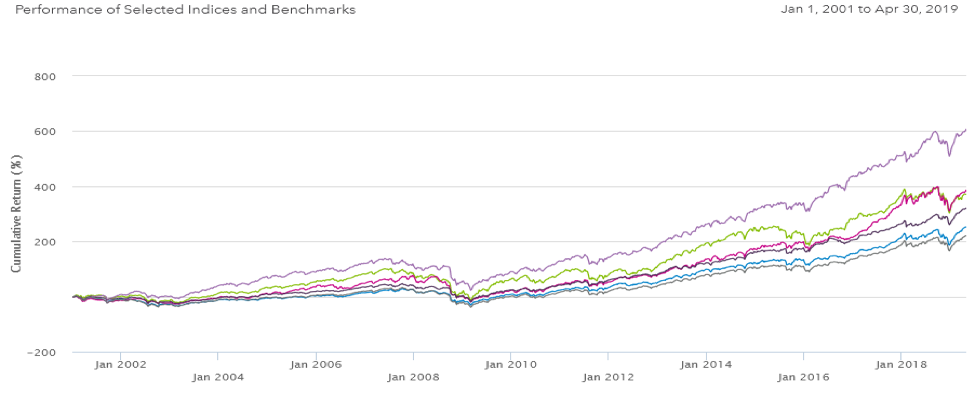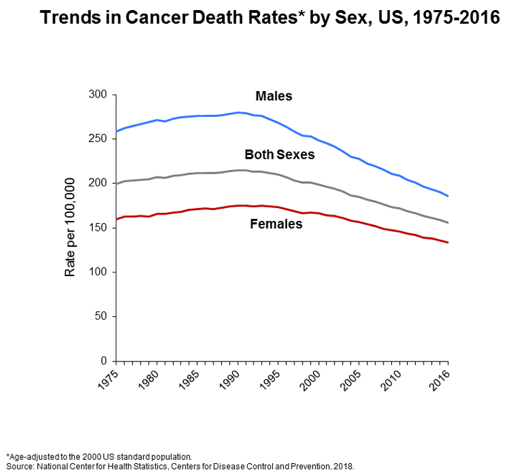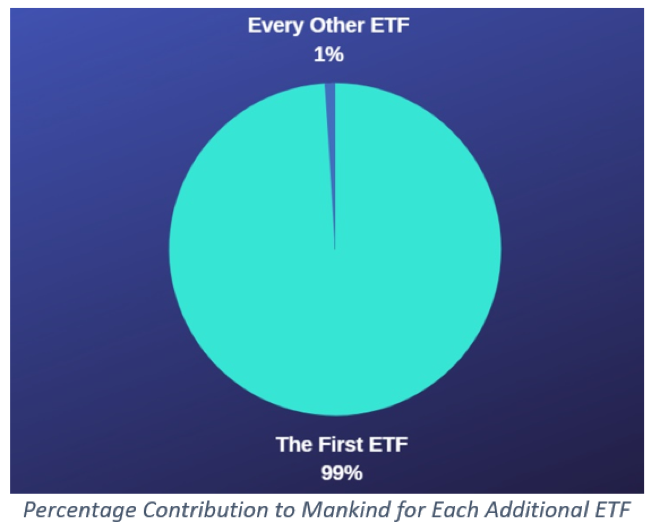Advisor Perspectives welcomes guest contributions. The views presented here do not necessarily represent those of Advisor Perspectives.
Q1 hedge fund letters, conference, scoops etc
There is simply no proof that outcomes have improved, or that risks have diminished from the proliferation of new ETF products. Instead, this has been little more than marketing to appeal to over-saturated advisors who desperately seek the next “story.”
To view the proper role that new product development should take in the context of an outcome-oriented industry, consider medicine.
Practice management consultants frequently compare investment advisors to doctors. Advisors, we are told, should conduct a thorough examination of our clients’ fiscal health, screen all possible investments, and prescribe effective investment strategies towards the objective of improving financial well-being. I too have used medical analogies and have told clients that net worth is their most important vital sign.
However well medical analogs work in communicating with clients, there is very little comparison to the way that the investment industry and the medical industry creates new products.
For example, cancer drugs have followed a mostly positive century-old continuum from radiation to chemotherapy to immunotherapy. At each stage not only has the treatment become more effective, it has become less invasive.
Radiation in the form of X-rays was first used in treatment in the early-20th century surprisingly soon after it was first discovered. Later, during World War II the U.S. military adapted peaceful uses of a medicinal form of mustard gas to fight lymphoma, becoming the first chemotherapy. This agent killed rapidly growing cancer cells. Then, in 1953 the structure of DNA was discovered by Watson and Crick. The medical applications were quick and revolutionary. Armed with the realization that DNA is the carrier of genetic information, doctors could make changes within patients’ cells to stimulate the immune system to fight cancer naturally. Immunotherapy was born. In recognition of this near miraculous achievement the Nobel Prize was recently awarded to two cancer immunotherapy researchers, James P. Allison and Tasuku Honjo.
All three treatments are still in use because, in some cases, radiation and chemotherapy are more effective. However, the path has been one of focused objectives with continually improved outcomes.
The bounty from these innovations is that the U.S. cancer death rate has dropped 27% in 25 years. This is a glowing testament to the power of medical innovation.
From doctors to investors
Can the investment industry claim equal success? Is product development moving along a course of more effective, less invasive? Can we assure investors that we have focused objectives with continually improved outcomes?
Look at the macro trends: the formation of the New York Stock Exchange, creation of the mutual fund, elimination of fixed commissions, advent of the index fund, or creation of the ETF, the answer is unambiguously yes. From Rothschild to Bezos, we witnessed a remarkable democratization of wealth, from an invincible 250-year-old banking family to the adopted son of a Cuban immigrant. Almost everyone on the Forbes world’s billionaires list got there from stock ownership. According to a Gallup poll, 54% of Americans own stocks. Anyone can do it. Thank you, Wall Street.
But if we narrow the lens to the last 30 years it doesn’t look as progressive. Nothing comes anywhere close to the invention of the ETF in 1993. ETFs have added $192 billion yearly in assets for 26 years. The astronomical growth of the ETF is without precedent in the investment industry or any other industry. Exchange traded funds are the most successful product of any type in history.
So far, so good. But I am not convinced that ETFs are getting better; they are just getting more numerous and soaking up more oxygen in the room. For 15 years through the last quarter the S&P 500 was up 8.57% annually, while the average ETF with a 15-year track record was up 7.44%. I am aware that mixed into these 15-year totals are ETFs that are not U.S. large blend, as is the S&P 500. However, when you compare the 145 U.S. large-blend ETFs, you see the same results – general underperformance, or merely comparable performance for every meaningful period up to 15-years.* Only 15 of 53 U.S. large-blend ETFs with a five-year track record outperformed the S&P 500. Is this innovation? Are investors benefiting? Or is this just everyone in the industry saying, “I want a piece of that $192 billion?”
The ETF industry’s response to improve this has been smart beta, a supposed improvement to mere indexing.
Smart Beta Is Not Just Marketing
Smart beta has generally worked. By optimizing indexes, the resulting performance enhancement has been positive. Each of the factors above materially outperformed the S&P 500 for this 19-year period ending 3/31/19, according to Blackrock. But, beware, a study by Rob Arnott found, “Using past performance to forecast future performance is likely to disappoint. We find that a factor’s most recent five-year performance is negatively correlated with its subsequent five-year performance.” This is a 19-year period, not a five-year period. Even so, says the study, “By significantly extending the period of past performance used to forecast future performance, we can improve predictive ability, but the forecasts are still negatively correlated with subsequent performance: the forecast is still essentially useless!”
Sorting ETF constituents by profits, volatility, weight, momentum and various other factors, has, if not improved, at least added a productive variety to beta.
This is where the story ends.
Read the full article here by Andy Martin, Advisor Perspectives




